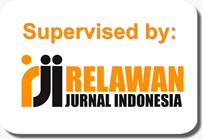DIGITAL FORENSICS: THE USE OF POLYGRAPHS IN PROVING TRUTH IN AUDIT CASES
Abstract
This article has five main objectives: 1) Polygraph Validity, 2) Ethical Use of Polygraph, 3) Legal Considerations, 4) Data Security, and 5) Polygraph Comparison with other methods, including Limitations. There is still a lack of understanding and studies related to using polygraphs in proving the truth in audit cases, such as in the case of the murder of fellow police officers, allegedly masterminded by their leaders. The research method used is a qualitative descriptive method. This study analyzed the literature review by collecting articles related to the keywords: Digital Forensics, Polygraph, and Proof of Audit Obfuscation. Articles were searched from Science Direct, Taylor & Francis, Emerald, and Google Scholar. Research results show that polygraph validity is still much debated because it is not always reliable and can be influenced by factors like subject anxiety, examiner expertise, and the subject's ability to control physiological responses. Ethical and legal considerations, including laws in Indonesia, and data security must ensure confidentiality. The use of polygraphs in digital forensic audits raises potential to increase the validity and reliability of digital evidence. Despite this potential, challenges such as ethical aspects, data security, and polygraph technology limitations must be considered.
Keywords: Digital Forensics; Polygraph; Law
Full Text:
PDFReferences
Admissibility, T H E, O F Polygraph, Pursuant Evidence, and T O Stipulationcriminal. 1971. "THE ADMISSIBILITY OF POLYGRAPH ('Lie-Detector') EVIDENCE PURSUANT TO STIPULATION IN CRIMINAL PROCEEDINGS." 593(1949).
Amsel, Tuvya T. 2017. "Ginton A. Examining Different Types of Comparison Questions in a Field Study of CQT Polygraph Technique: Theoretical and Practical Implications, Journal of Investigative Psychology and Offender Profiling, 2017." European Polygraph 11(1): 35-37.
Aristiani, Putu Tissya Poppy, and I Wayan Bela Siki Layang. 2022. "Regulation of Lie Detector in Court in Criminal Case Evidence." Kertha Semaya: Journal of Legal Science 10(3): 506.
Asonov, Dmitri et al. 2023. "Building a Second-Opinion Tool for Classical Polygraph." Scientific Reports 13(1): 1-14. https://doi.org/10.1038/s41598-023-31775-6.
Ayoub, Aabad, Farwa Rizvi, Saba Akram, and Muhammad A. Tahir. 2018. "The Polygraph and Lie Detection: A Case Study." Arab Journal of Forensic Sciences & Forensic Medicine 1(7): 902–8. http://dx.doi.org/10.26735/16586794.2018.008.
Babu Rajan, Panthayil. 2018. "Polygraph Tests - Benefits and Challenges." Academicus International Scientific Journal 19: 146-55.
Gołaszewski, Marcin, Paweł Zajac, and Jan Widacki. 2015. "Thermal Vision as a Method of Detection of Deception: A Review of Experiences**." European Polygraph 9(1): 5-24.
Hinkle, Courtney. 2021. "The Modern Lie Detector: The AI-Powered Affect Act (EPPA).": 1201-62.
Hochman, Guy, Dar Peleg, Shahar Ayal, and Dan Ariely. 2019. "The Lie Deflator - The Effect of Polygraph Test Feedback on Subsequent (Dis)Honesty." Judgment and Decision Making 14(6): 728-38.
Kwan, Choi Jin, Chung Seok Hwa, Lee Jai Suk, and Lim Geum Seop. "RESEARCH OF VIDEO POLYGRAPH FOR LIE DETECTION.": 150-58.
Lovina. 2020. "The Position and Validity of Polygraph Examination Results in the Indonesian Criminal Evidence System: A Review of the Principles of Fair Justice." 3(1): 175-201.
Mallow, Muzaffar Syah. 2020. "The Admissibility of Polygraph Test as Evidence." (June): 15-17.
Simpsons, The, Homer Simpson, and the Lie Detector. 1921. "The Forensic Polygraph: Separating Fact from Fiction by Alex Faunce, M.A. Please Do Not Reproduce This Article or Any of Its Contents without Permission." : 3-8.
Talaat, Fatma M. 2023. "Explainable Enhanced Recurrent Neural Network for Lie Detection Using Voice Stress Analysis." Multimedia Tools and Applications (0123456789). https://doi.org/10.1007/s11042-023-16769-w.
Tests, Directed-lie Polygraph et al. 2001. "20020722 256." 298.
Turlik, J. A. 1981. "The Courtroom Status of the Polygraph." Akron Law Review 14(1): 133-53.
Widacki, Jan, and Anna Szuba-Boroń. 2017. "Polygraph Examinations of Civil Servants in Poland." European Polygraph 11(1): 15-23.
Zabcikova, Martina, Zuzana Koudelkova, and Roman Jasek. 2022. "Concealed Information Detection Using EEG for Lie Recognition by ERP P300 in Response to Visual Stimuli: A Review." WSEAS Transactions on Information Science and Applications 19: 171-79.
Необходимости, К Вопросу О, Признать Оказание, Интимных Услуг, and Предметом Взяточничества. 2015. "Красненкова Е.В. К Вопросу О Необходимости Признать Оказание Интимных Услуг Предметом Взяточничества." Полицейская Деятельность 6(6): 413-18.
DOI: https://doi.org/10.31846/jae.v12i2.764
Refbacks
- There are currently no refbacks.

This work is licensed under a Creative Commons Attribution-NonCommercial-NoDerivatives 4.0 International License.
e-Jurnal Apresiasi Ekonnomi Indexed by:












